Every few years Statistics Canada conducts a detailed survey on the state of Canadian household finances, called the Survey of Financial Security. These surveys aren’t necessarily conducted at set intervals, but with the last one having been done as far back as 2019, it was beginning to feel like another one was more than due. Fortunately, the latest survey results from 2023 were released earlier this week, providing a detailed breakdown of net worth distribution by wealth category, age, family type, province, and city. The results of this survey will be particularly interesting in that the last survey was conducted in 2019, just prior to the pandemic. Having another survey in 2023 will give us a bit of glimpse into some of the changing wealth distributions and patterns that arose as a result of the economic turmoil over the last 4 years. With that being said, let’s dig right into the numbers.
The following chart shows the historical median net worth of Canadian households since the survey was first published in 1999. All net worth figure in the chart are inflation-adjusted (using 2023 dollars).
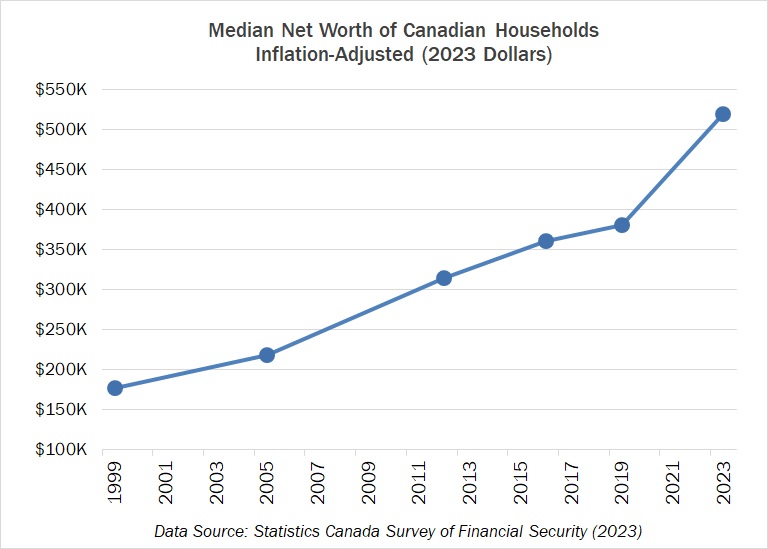
We can see that the increase in net worth from 2019 to 2023 is significantly higher than past years. With the huge fiscal stimulus and subsequent inflation that came about as the result of the pandemic, the magnitude of the wealth creation should hardly come as a surprise. Let’s now show these changes a bit more precisely as the annualized change in net worth between survey periods.
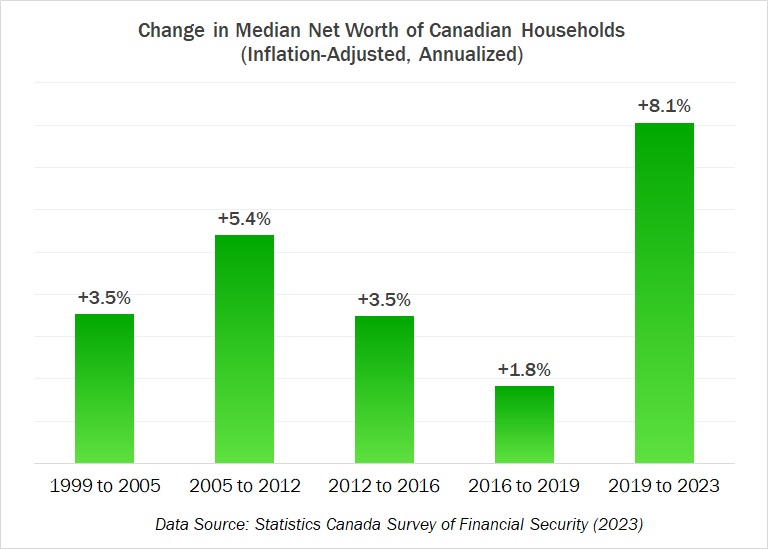
Again, nothing really surprising here. The per-year increase in net worth since 2019 is large – something that’s never been seen before since the survey’s first publication in 1999. Canadians increased wealth at an unprecedented clip over the course of the pandemic, and the increase wasn’t limited to the rich either. Let’s break down changes in net worth for both the richest 20% and poorest 20% of Canadians.
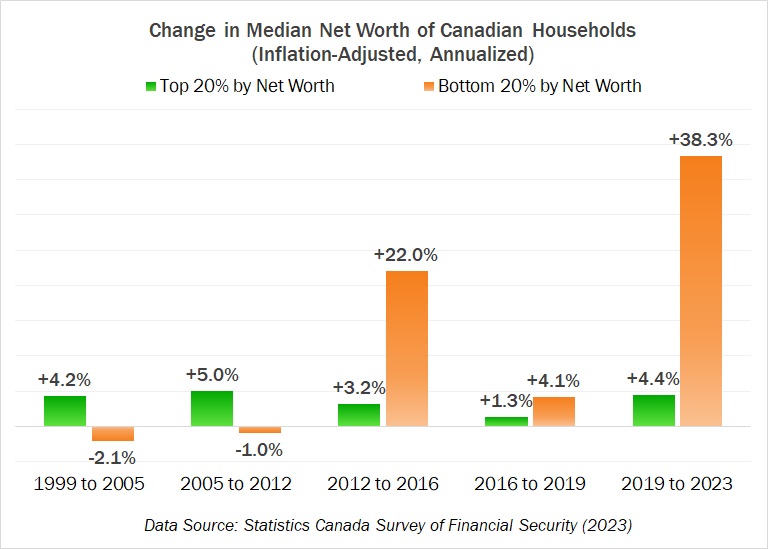
The rich certainly got richer, but from a percentage basis so too did the poorest 20% of Canadians. In fact, we see a ~38% increase per year increase in net worth for the bottom quintile of Canadians. Now, the Survey of Financial Security also provides a breakdown of net worth by decile, which we show below.
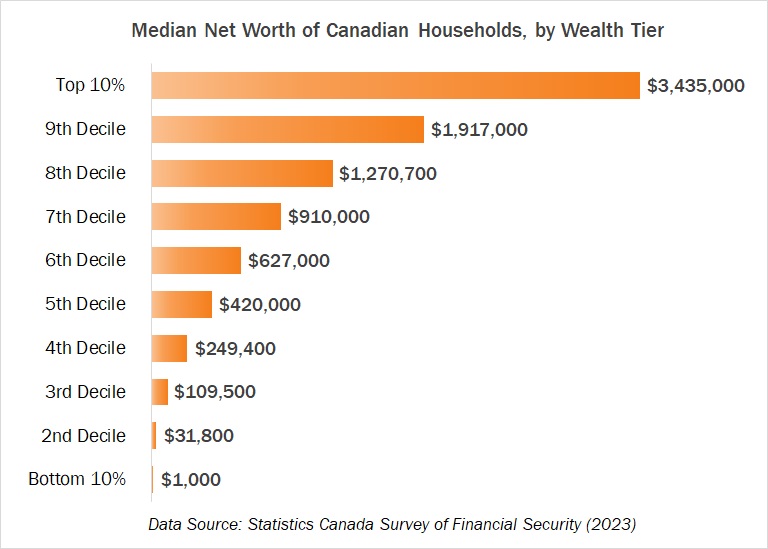
The chart above shows that the median net worth of the wealthiest 10% of Canadians is about $3.4M, while the poorest 10% of Canadians have a net worth of about $1k. That’s obviously a huge discrepancy, but let’s see how things have changed over the last 4 years.
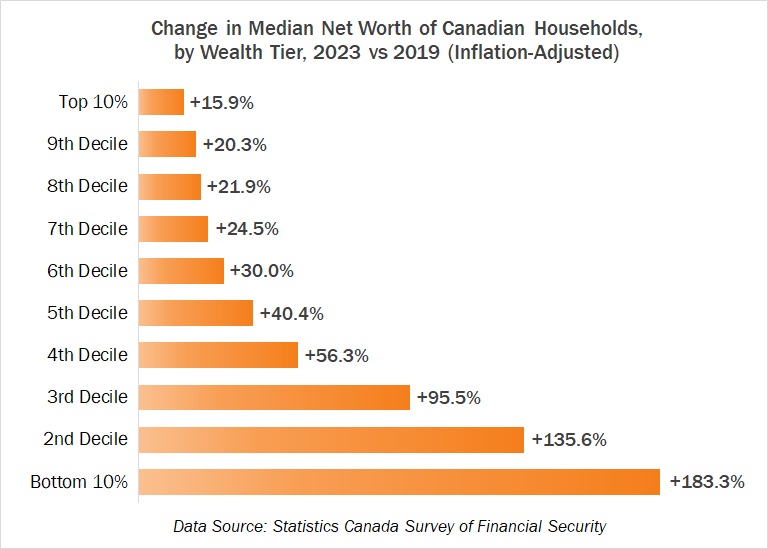
On a percentage basis, then, it’s clear that wealth creation has been even more pronounced for the poorest of Canadians than it has been for the wealthiest. Now obviously this isn’t true on a dollar basis, and it’s not saying there isn’t a huge wealth disparity between the wealthiest Canadians and the poorest, but government fiscal stimulus has pretty much boosted wealth for Canadians across the economic spectrum. Let’s now look at net worth distribution by age.

We can further break down these numbers between families and individuals.
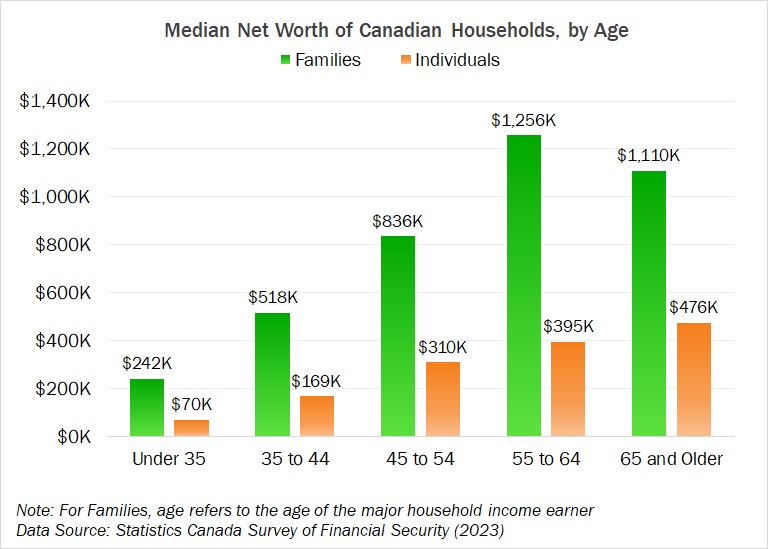
Again, no surprise here. People generally have more money as they get older, and families tend to have more wealth than individuals at an equivalent age. Comparing the results from the 2019 survey, we can once again see, on a percentage basis, where the growth in wealth has been highest.
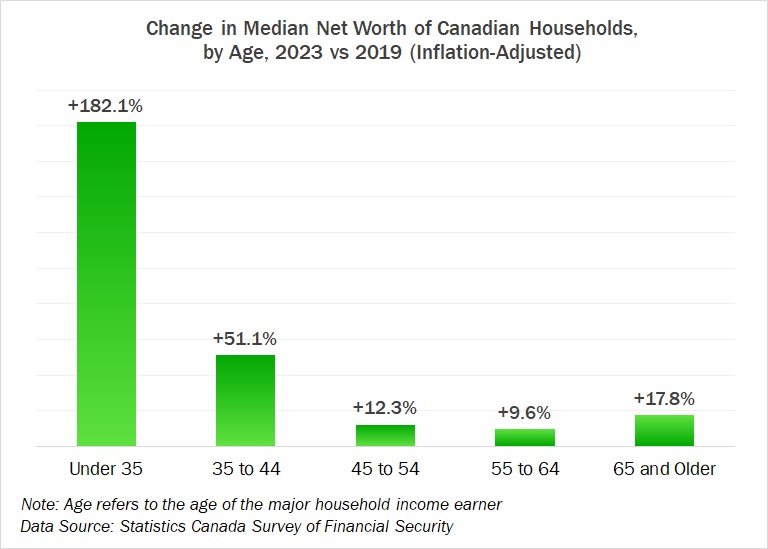
The fact that younger Canadians have much higher percentage increases in net worth than older Canadians should come as no surprise. Given that younger Canadians will tend to have less wealth than older Canadians, this is consistent with the earlier data showing that poorer Canadians have seen larger percentage increases in wealth relative to wealthier Canadians.
Turning now to geographical distributions, let’s take a look at median net worth by province.
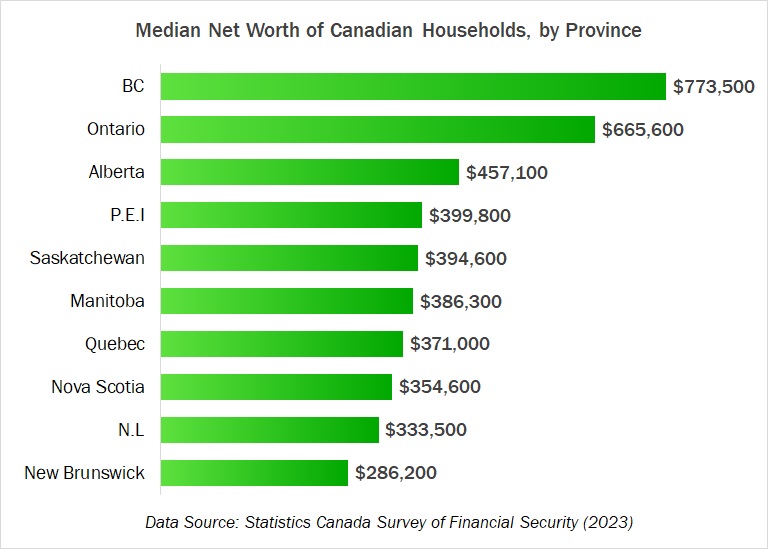
Now let’s take a look at changes in net worth relative to the 2019 survey, again, by Province.

The Survey of Financial Security also provides a breakdown of net worth for major Canadian cities.
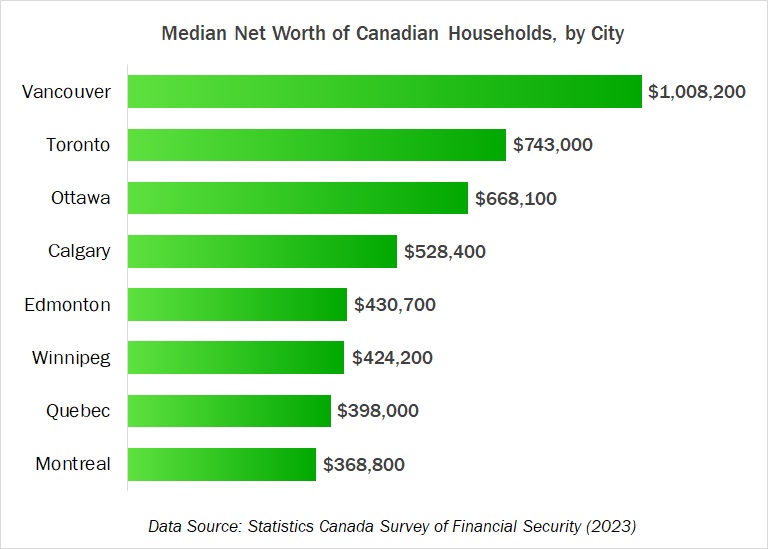
And lastly, here is the change relative to the 2019 results:
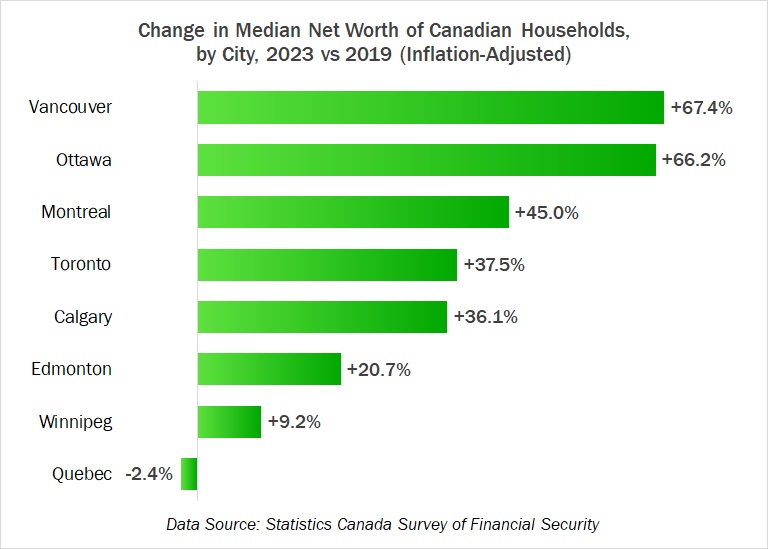
There are a definitely more charts we could put together to get a deeper glimpse into wealth distribution within Canada, but this should be more than enough for most readers to gauge where they stand relative to their peers. We haven’t covered the detailed asset and liability distributions of Canadian households as of yet, but more to come in a further post.

